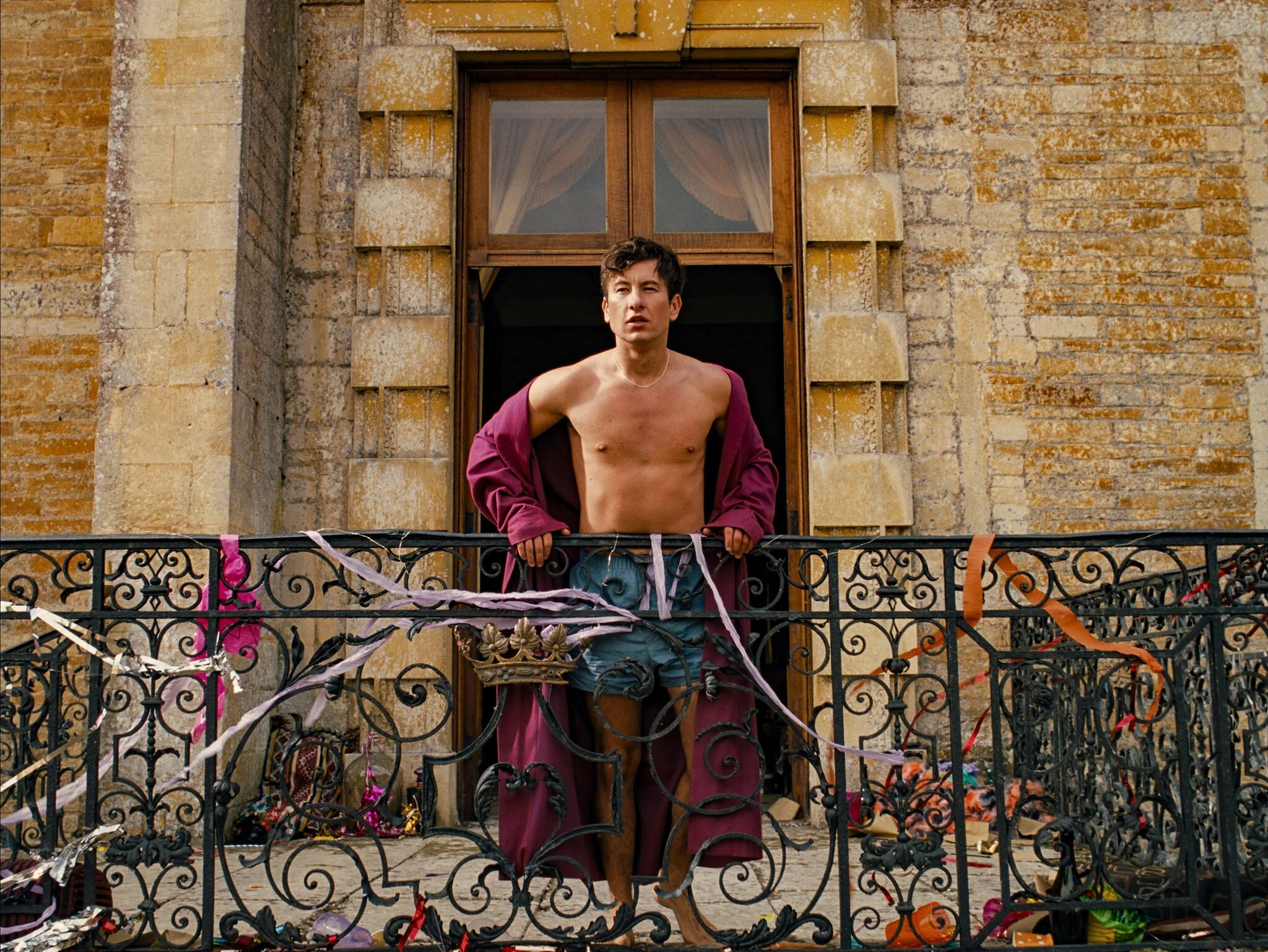SCOUTING SALTBURN
Saltburn has arguably been one of 2023’s more divisive films, however one thing viewers have all agreed on, is the production’s cinematography, set design and location work. The memorable Catton family estate, was initially scouted by the film’s writer/director, Emerald Fennel, and set designer, Suzie Davies. Although filming in decadent British estates is not something new in the industry, what is unusual about this particular find is that the location had never been filmed or even photographed before, which allowed the production to truly work with a historic home, rather than a well dressed set.
When imagining the Catton home, Fennel and Davies had wanted to find something that gave a truly lived in texture to the screen, where viewers could voyeur into the lives of people who live in these types of places without the usual tropes of divinely polished opulence. They wanted historic luxury with a dirty reality. This 14th century estate nestled in Northamptonshire, also had almost all the features the production needed, including a square pond, chapel and sprawling gardens. After convincing the owners into giving Saltburn the go ahead, the production team were able to construct, design, modify and paint anything else needed to bring their visions into cinematic reality- something very often unheard of in the world of historic estate film locations.
The bathroom connecting the two boy’s rooms, where the infamous bathtub scene occurred, was for example completely fabricated by the film’s art department inside a third bedroom that otherwise sat sandwiched between either boudoir. Another constructed aspect of the film was the climactic maze, which was part built by maze designer, Adrian Fisher, and part digitised using CGI. Ultimately, however the production has commented on how remarkable it was to find a location that ticked nearly all boxes, was receptive to transformation and had never been shot before.
This provides an almost perfect example of what an ideal film location offers- creative specificity, receptive owners and rarity. Silverstein Locations provides access to a variety of listed heritage buildings which can all be found here.

